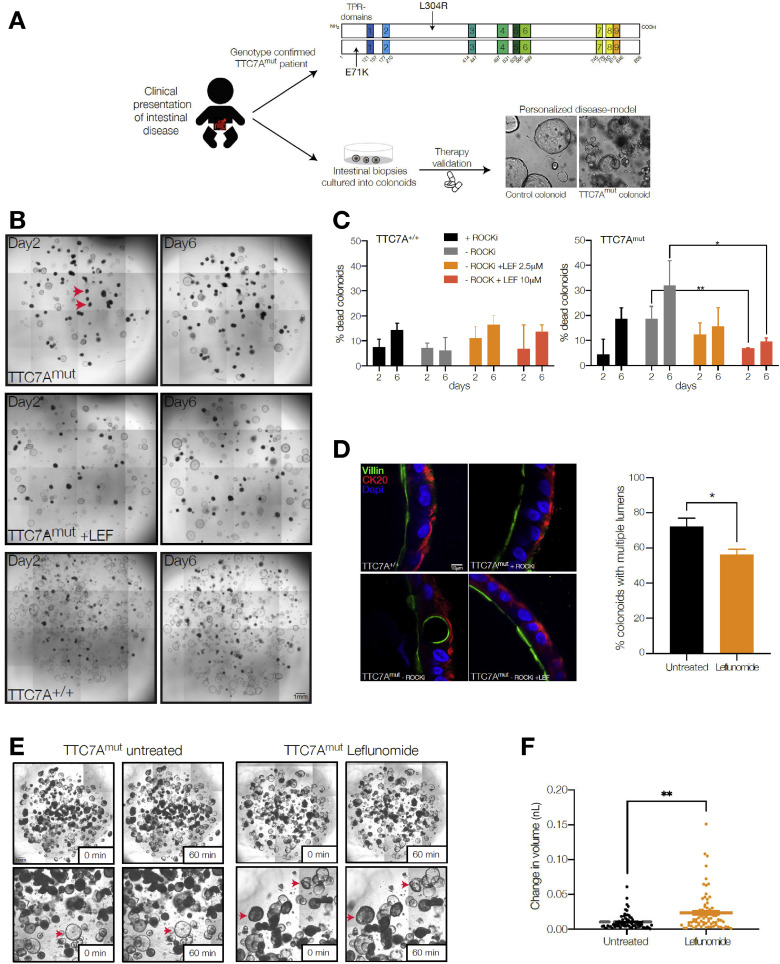Fig. 6
Leflunomide treatment enhances survival and function of TTC7A-deficiency patient colonoids. (A) A personalized medicine approach to evaluate drug efficacy in human TTC7A deficiency using patient-derived colonoids. Endoscopic biopsy samples were obtained from healthy control individuals and patients with TTC7A deficiency (E71K and L304R compound heterozygous, TTC7Amut) and cultured into colonoids, which were then tested with leflunomide. (B) Leflunomide improves the survival of human colonoids derived from patients with TTC7A-deficiency (TTC7Amut). Example images of control (TTC7A+/+) and TTC7A-deficient (TTC7Amut) colonoids with and without leflunomide (10 μmol/L) treatment at 2 and 6 days and grown in the absence of ROCK inhibitor (Y27632). Red arrows indicate examples of dead colonoids. (C) Summary graph showing the percentage of dead TTC7Amut colonoids with and without leflunomide treatment. TTC7Amut and TTC7A+/+ colonoids were cultured with and without ROCK inhibitor (Y27632) or with leflunomide, and viability was assessed at days 2 and 6. TTC7Amut colonoids grown without ROCK inhibitor have significantly increased death, which is reversed after leflunomide treatment. One-way ANOVA with post hoc test (Tukey-Kramer); *P < .05. **P < .01. (D) Immunofluorescence staining of TTC7A+/+ and TTC7Amutcolonoids with villin (green) marking the apical brush border and CK20 (red) marking basal epithelial structure and DAPI (blue, nuclei). TTC7A+/+colonoids show normal polarity with defined basal CK20 staining. TTC7Amut colonoids treated with ROCK inhibitor show grossly normal staining with mild cytological atypia. TTC7Amut colonoids without ROCK inhibitor show normal sidedness but abnormal polarity with cytological atypia and basal structural abnormalities, which is improved in leflunomide-treated colonoids. Quantification of abnormal polarity, as assessed by the presence of multiple lumens in colonoids. Percentage of colonoids with multiple lumens in TTC7A-deficient colonoids with and without leflunomide (10 μmol/L). Healthy control colonoids did not have multiple lumens (data not shown). Two tailed t test, *P < .05. (E, F) TTC7A-deficient colonoids (TTC7Amut) have a reduced swelling response to forskolin stimulation. Example images showing reduced swelling in TTC7Amut compared with TTC7Amut treated with leflunomide (10 μmol/L). The inset panel shows magnified images, with red arrows indicating example colonoids before and after swelling. Summary data show significantly increased swelling in leflunomide (10 μmol/L)-treated TTC7Amut colonoids. Two-tailed t test, **P < .01.

